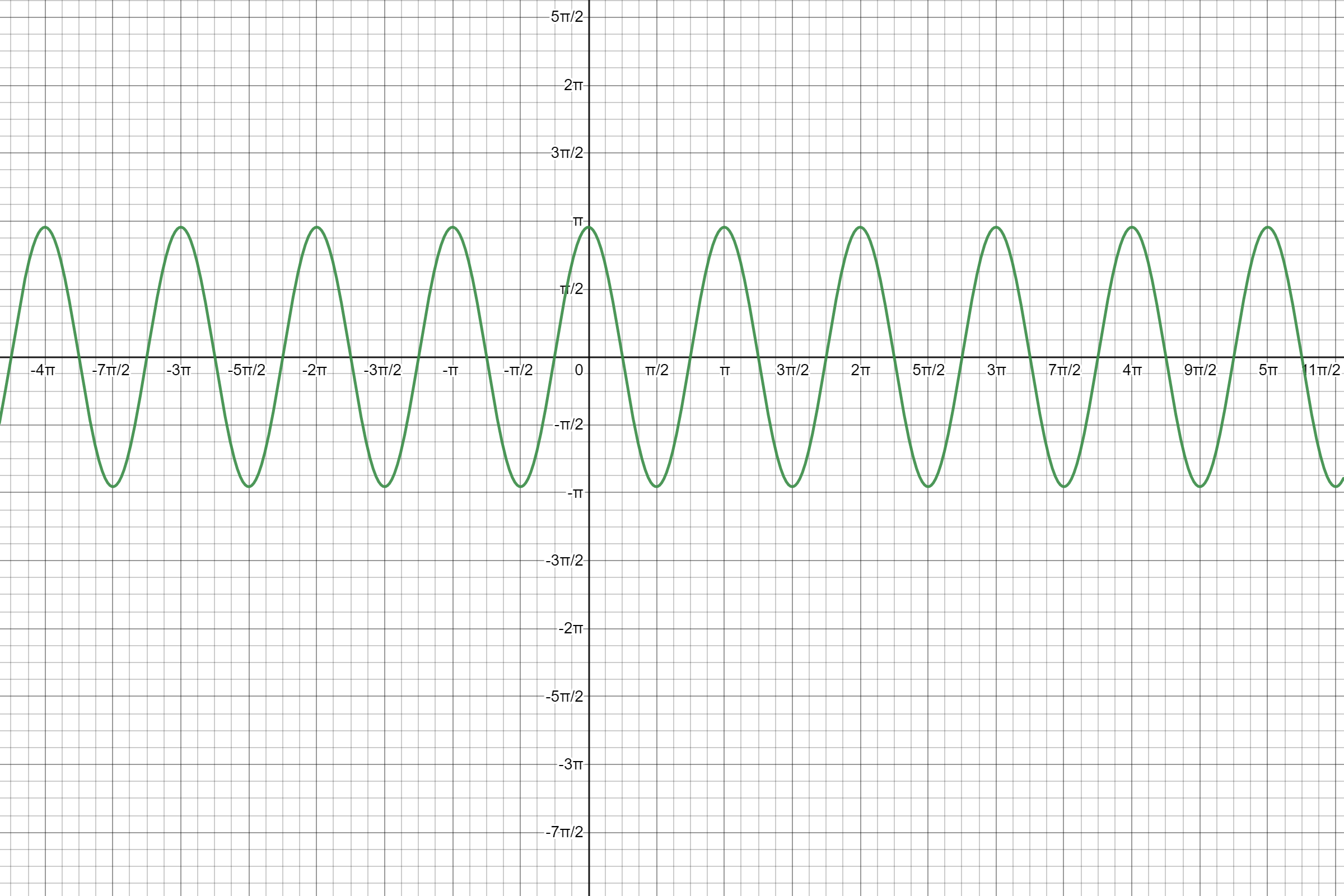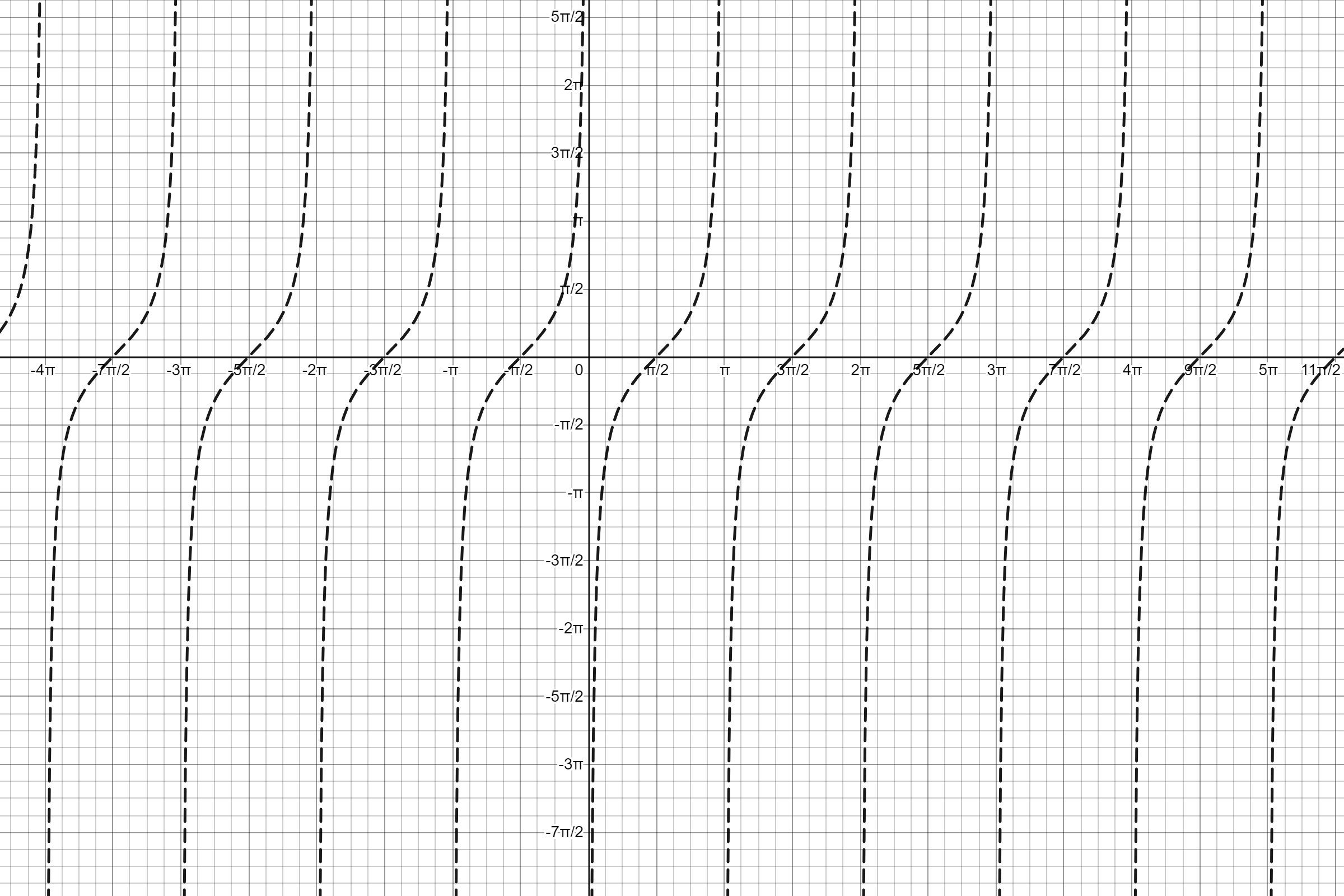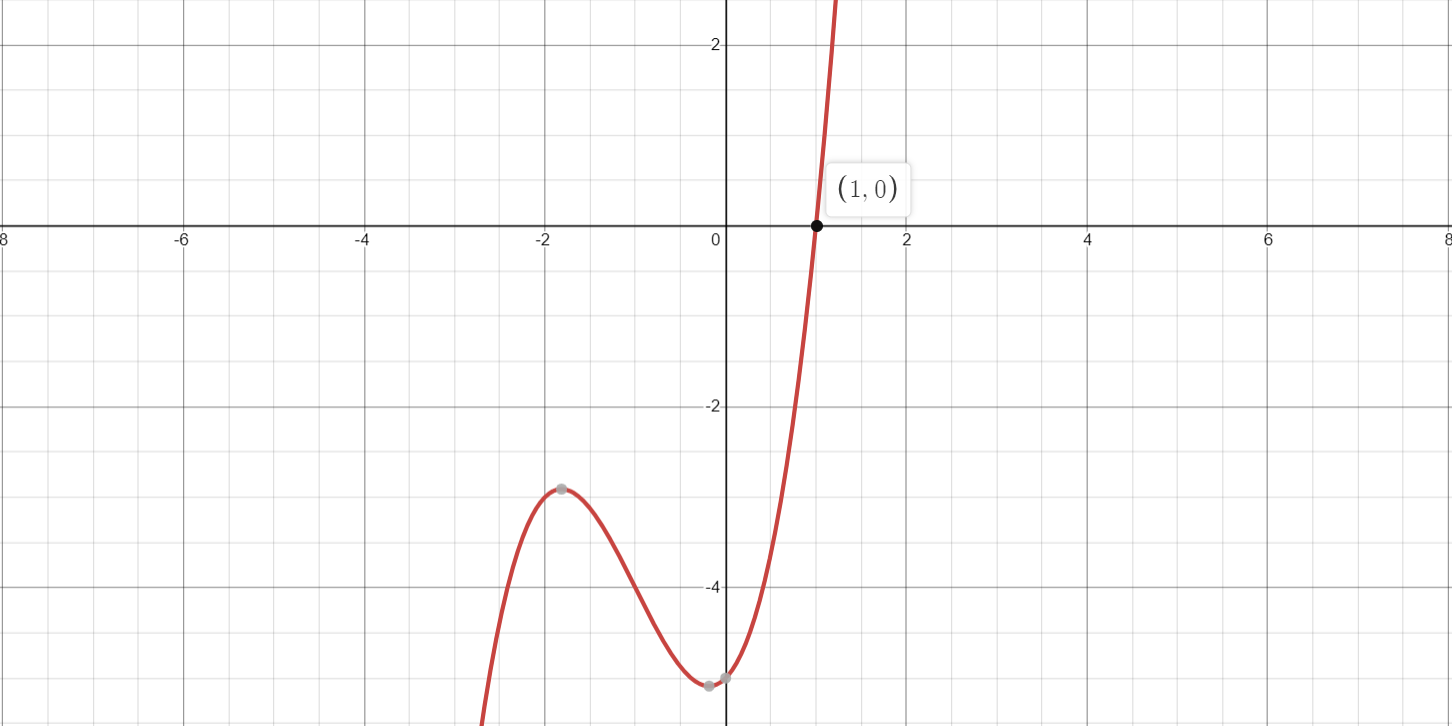All Solutions
Page 557: Closure Activity
$a$.
$$
begin{align*}
y = 3cdot cos(2x) tag{1} \
end{align*}
$$
Since we know that the amplitude and period of a function $y = A cdot cos(Bx)$ is given by,
$$
begin{align*}
text{Amplitude} & = A \
text{ Period} & = dfrac{2pi}{B}\
end{align*}
$$
Comparing $(1)$ with the general form, $A = 3$ and $B = 2$. Thus, the amplitude and the period of the given function are given as follows.
$$
begin{align*}
text{Amplitude} & = 3 \
text{ Period} & = dfrac{2pi}{2}\
& = pi\
end{align*}
$$

$b$.
$$
begin{align*}
y = 3cdot tan(x- dfrac{pi}{2}) tag{2}\
end{align*}
$$
Since we know that the tangent function does not have any amplitude. So, the period of a function $y = A cdot tan(Bx)$ is given by,
$$
begin{align*}
text{ Period} & = dfrac{pi}{left|Bright|} \
end{align*}
$$
Comparing $(1)$ with the general form,$B = 1$. Thus, the period of the given function is given as follows.
$$
begin{align*}
text{ Period} & = dfrac{pi}{left|1right|}\
& = pi\
end{align*}
$$

a. $f(x)=sin{x+dfrac{pi}{2}}$ (period $2pi$)
b. $f(x)=sin{x-pi}-3$ (period $2pi$)
c. $f(x)=5sin{4x}$ (period $dfrac{pi}{2}$)
d. $f(x)=sin{dfrac{1}{3}left( x-dfrac{pi}{2}right)}$ (period $6pi$)
b. $f(x)=sin{x-pi}-3$
c. $f(x)=5sin{4x}$
d. $f(x)=sin{dfrac{1}{3}left( x-dfrac{pi}{2}right)}$
$f( x) = x^{3} + 3x^{2} + x – 5$
Graph of $f(x)$ we can have a point that will satisfy the given function.

$$
begin{align*}
f(x) &= x^{3} + 3x^{2} + x – 5\
f(1) & = (1)^{3} + 3 (1)^{2} + 1 – 5 \
&= 1 + 3 + 1 -5 \
&= 0 \
end{align*}
$$
According to the remainder theorem, we can say that $(x – 1)$ is the factor of the polynomial.
$
begin{array}{ccccccccccccccccccccc}
&&&&&&x^2 &+4x&+5&\
cline{3-10}
multicolumn{2}{r}{x – 1surd}
&x^3 & &+3x^2&+x&- 5& \
& &x^3& &+x^2& & & & \
cline{3-7}
&&&&4x^2&+x&-5& \
&&&&4x^2&+4x&& \
cline{4-8}
&&&&&5x&-5& \
&&&&&5x&+5& \
cline{5-9}
cline{6-10}
end{array}
$
$$
begin{align*}
f(x) &= (x-1) (x^{2} + 4x + 5)\
end{align*}
$$
Solving $x^{2} + 4x + 5$ separately,
$$
begin{align*}
&= (x^{2}+ 4x + (2)^{2} – (2)^{2} + 5) left[text{ Using Completing the square method}right]\
&= (x+2)^{2} + (1)^{2}\
-1&= (x + 2)^{2}\
-1&= (x + 2)^{2} \
i^{2}&= (x+2)^{2} left[-1 = i^{2}right]\
end{align*}
$$
Taking square root both sides, we get
$$
begin{align*}
i &= +(x+ 2)\
x&= -2 + i \
text{ or}\
i&= – (x + 2)\
x&= -2 – i\
end{align*}
$$
$$
sum_{n=1}^{10} (3+3(n-1))=sum_{n=1}^{10}(3n)
$$
b. Since the first term is $-7$ and the consecutive terms increase by 3:
$$
sum_{n=1}^{7} (-7+3(n-1))=sum_{n=1}^{7}(-10+3n)
$$
b. $sum_{n=1}^{7}(-10+3n)$
b. No, because the upper boundary of the sum is $infty$.
c. Since $r<1$, the sum will exist. The infinite sum of a geometric sequence is
$$
dfrac{a}{1-r}
$$
with $a$ the first term and $r$ the common ratio.
Thus we then obtain:
$$
S=dfrac{4}{1+dfrac{2}{3}}=dfrac{12}{5}=2.4
$$
b. No
c. $dfrac{12}{5}$
$$
dfrac{63-3}{0.3}+1=200+1=201
$$
b. The sum of an arithmetic sequence is the sum of the first and last term, multiplied by the number of terms, divided by 2:
$$
dfrac{(3+63)201}{2}=6,633
$$
b. 6,633
{color{#4257b2}text{a)}}
$$
Solution to this example is given below
The first term is $3$,
and the difference between the terms is $boldsymbol{0.3}$
Because $3+0.3=3.3$.
The number of terms is the
difference between the last and first term
divided by the common difference
and incerased by 1.
$$
begin{align*}
t&=frac{63-3}{0.3}+1&&boxed{text{Use the formula}}\
t&=frac{60}{0.3}+1&&boxed{text{Subtract the numbers: }63-3=60}\
t&=200+1&&boxed{text{Divide the numbers: } frac{60}{0.3}=200}\\
t&=201&&boxed{text{Simplify}}\\
&boxed{{color{#c34632}t=201} }&&boxed{text{Final solution}}\
end{align*}
$$
{color{#4257b2}text{b)}}
$$
Solution to this example is given below
The sum of an arithmetic series is
the sum of the first and last term,
multiplied by the number of terms
and divided by 2
$$
begin{align*}
S(n)&=frac{(3+63)n}{2}&&boxed{text{Use the formula}}\
S(201)&=frac{3+63)201}{2}&&boxed{text{Substitute }201 text{ for }n}\
S(201)&=frac{66cdot201}{2}&&boxed{text{Calculate within parentheses: }3+63=66}\
S(201)&=frac{13266}{2}&&boxed{text{Multiply the numbers: }66cdot201=13266
}\
S(201)&=6633&&boxed{text{Simplify}}\\
&boxed{{color{#c34632}S(201)=6633} }&&boxed{text{Final solution}}\
end{align*}
$$
color{#4257b2} text{ a) }t=201
$$
$$
color{#4257b2} text{ b) }S(201)=6633
$$
$$
adfrac{1-r^n}{1-r}
$$
with $a$ the first term and $r$ the common ratio and $n$ the number of terms:
$$
20dfrac{1-(0.7)^5}{1-0.7}=55.462
$$
$dfrac {27}{sin {40}}=dfrac {x}{sin {30}}$ (The law of sins)
$dfrac {27}{0.6428}=dfrac {x}{0.5}$
$x=0.5 cdot dfrac {27}{0.6428}$
$$
x approx 21
$$
The missing angle of the triangle is: $180-(27+39)=114 text{textdegree}$
$dfrac {81}{sin {39}}=dfrac {x}{sin {114}}$ (The law of sins)
$dfrac {81}{0.6293}=dfrac {x}{0.9135}$
$x=0.9135 cdot dfrac {81}{0.6293}$
$$
x approx 117.58
$$
b- $x approx 117.58$
$$
begin{align*}
cos(alpha) & = dfrac{5}{13}\
end{align*}
$$
Also, the range is $dfrac{3pi}{2}$ $leq$ $alpha$ $leq$ $2pi$. The range explains fourth quadrant.
Using Identity $sin^{2}(x) + cos^{2}(x) = 1$. Thus, value of $sin$ $alpha$ is given as follows,
$$
begin{align*}
sin (alpha) &= sqrt{left[1-left(dfrac{5}{13}right)^{2}right]}\\
&=sqrt{1- dfrac{25}{169}} \\
&= sqrt{dfrac{169-25}{169}} \\
&= sqrt{dfrac{144}{169}} \\
&= +dfrac{12}{13} (text{ ignoring because of IV quadrant})\\
&= – dfrac{12}{13}\\
end{align*}
$$
Thus, $sin(alpha) = -dfrac{12}{13}$.
Thus,
$$
begin{align*}
cosec (alpha) &= -dfrac{13}{12} \
end{align*}
$$
And,
$$
begin{align*}
sec (alpha) &= dfrac{13}{5} \
end{align*}
$$
$$
begin{align*}
tan (alpha) & = dfrac{-dfrac{12}{13}}{dfrac{5}{13}}\\
tan ( alpha) & = -dfrac{12}{5} \
end{align*}
$$
Also,
$$
begin{align*}
cot (alpha) & = – dfrac{5}{12}\
end{align*}
$$

